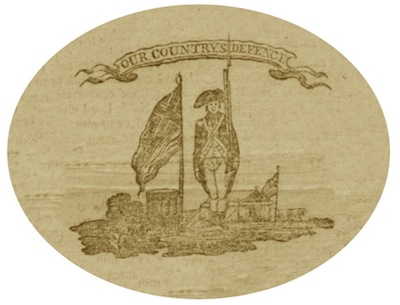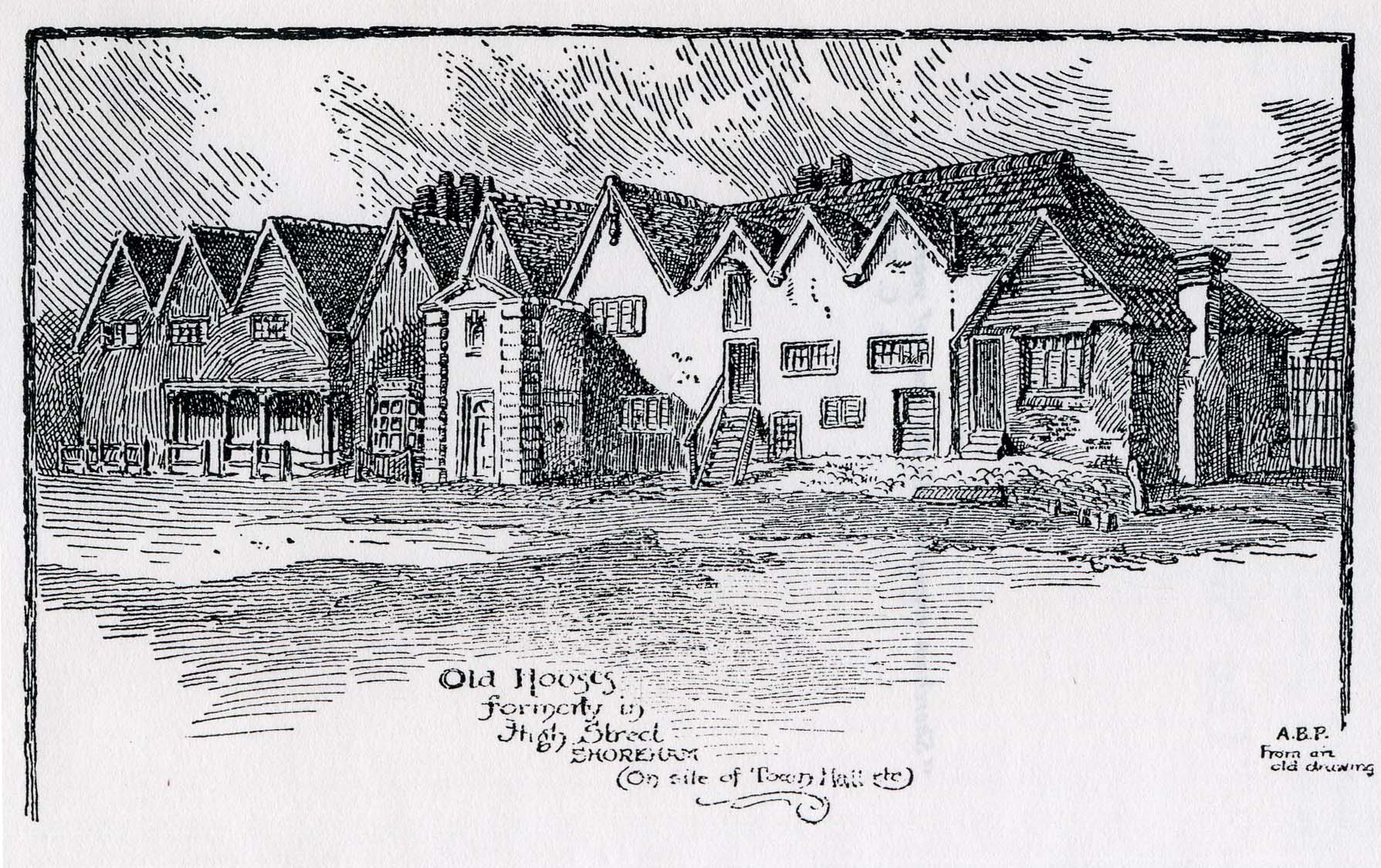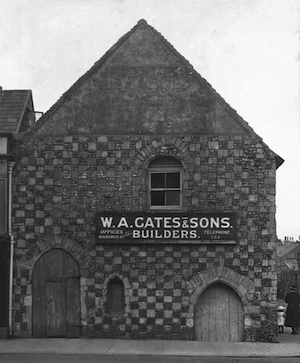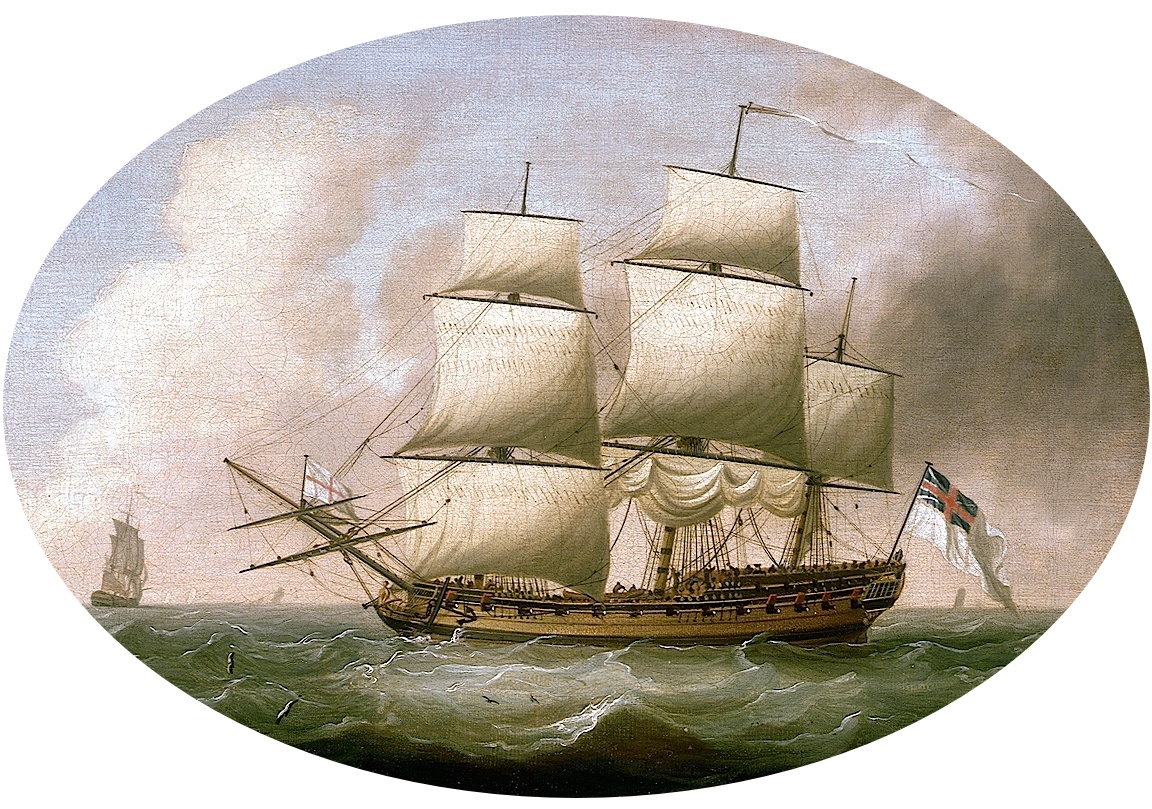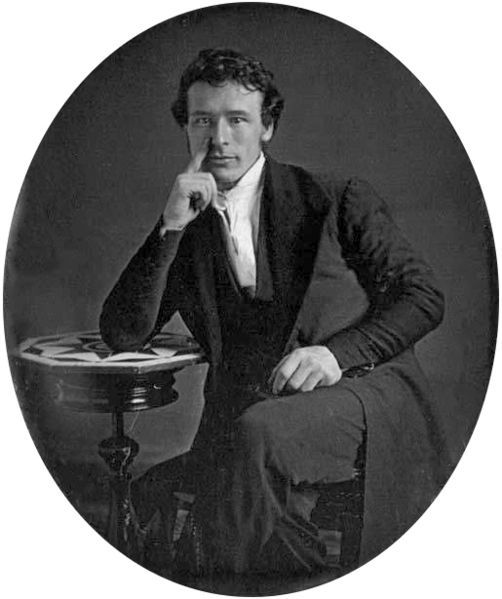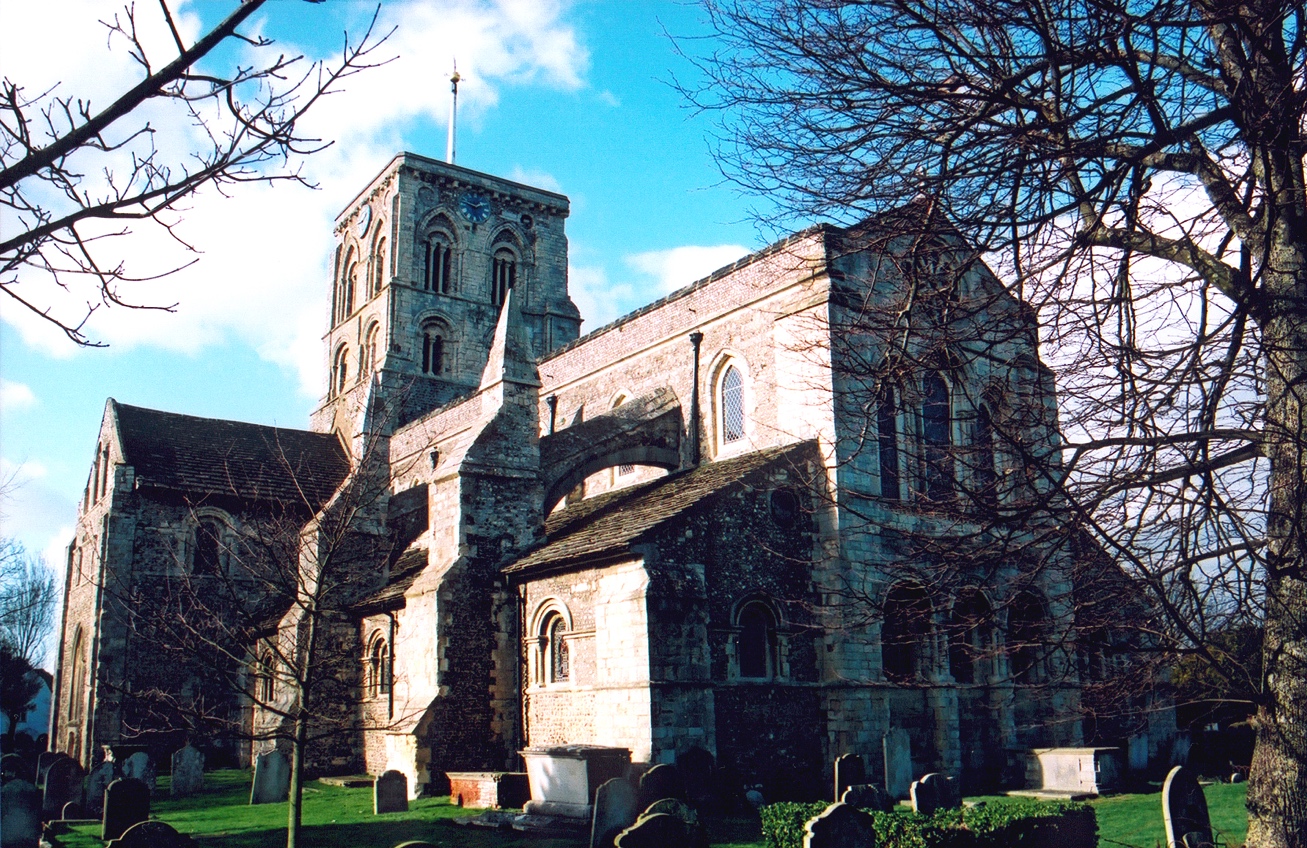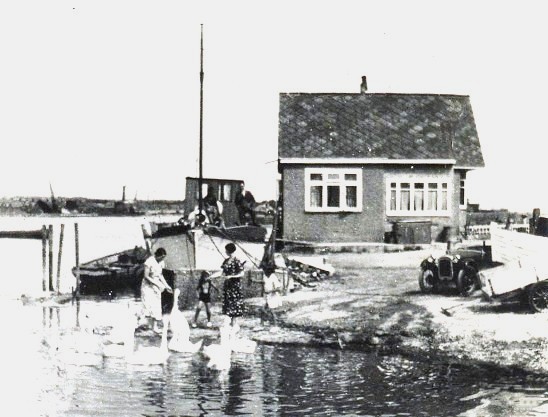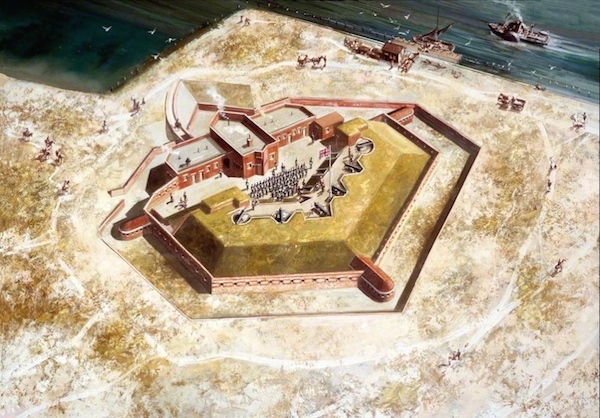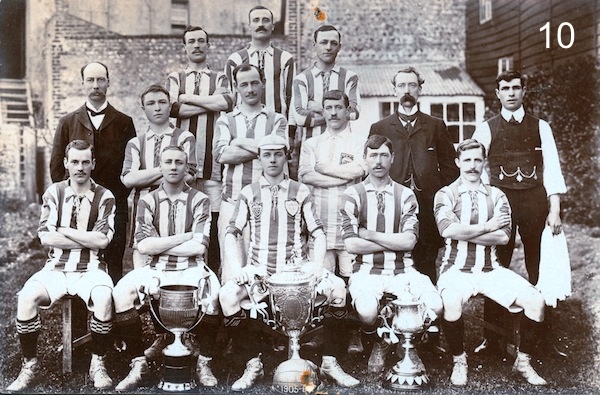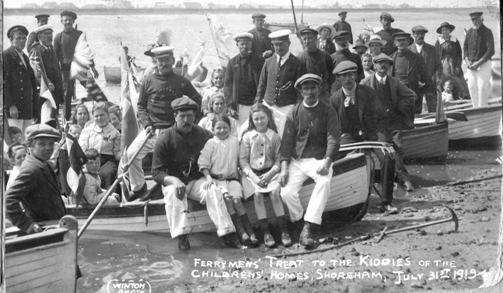During the Napoleonic Wars the threat of invasion by the French caused Britain to strengthen its defences along the south coast in readiness. Initially, more troops were redeployed to the south followed later by other defensive precautions such as the Martello Towers that were built along the Kent and East Sussex coasts. Barracks and camps were set up, most were intended only as temporary accommodation for the troops but the one along the Lewes Road near Brighton became permanent and survived into the 20th century as Preston Barracks. There were others further inland but the local coastal camps were at Blatchington (Hove), Southwick, Steyning, New Shoreham and Worthing. Continue reading “Napoleonic Army Camps”
Mediaeval Shoreham
– an alternative view of mediaeval Shoreham and the location of buildings within it
Henry Cheal was, and is almost certainly destined to remain, Shoreham’s leading authority concerning the town’s history. By his own admission much of his conjectural map of mediaeval Shoreham was based upon educated assumption largely from clues discovered in ancient records. This paper, using many of the same archives he used together with research and opinions of more recent reports is not intended to disprove his views but merely to suggest possible alternatives to them.
The Saving of Marlipins
The Marlipins building is generally accepted as a monument of considerable historic importance. It is hard to believe now that during the early 1920’s it was in danger of being demolished and only saved due to the generosity of donors, the co-operation of the owner and the efforts of many individuals. Of the latter there were two men in particular who provided the impetus not only to preserve the building but also to set it up as the town’s own museum.
Continue reading “The Saving of Marlipins”HMS Shoreham 1693 to 1719
Shoreham built, Shoreham by name fighting the French and pirates in France, Ireland and the New World.
In mediaeval times Shoreham was as productive as London as a naval shipbuilding port responsible for some of the most important naval ships of the time and even during the 17th and 18th centuries over 30 vessels of sizeable ratings were built there for the Royal Navy. Continue reading “HMS Shoreham 1693 to 1719”
Shoreham Harbour 1875
(a pamphlet recording a speech at the meeting of the trustees donated by Andy Ramus)
John Jabez Edwin Mayall 17 Sept 1813 – 6 March 1901
On Tuesday July 20th 1875, Alderman Mayall, having been appointed by the Brighton Corporation to be one of the trustees of the Shoreham Harbour Board, gave a speech at a meeting of the trustees at the Dolphin Chambers, Shoreham, where he laid out his plan to get a new bill passed through Government to allow the port greater borrowing powers in order to make the most of Shoreham Harbour’s potential. Continue reading “Shoreham Harbour 1875”
Loss of the Nave of St Mary de Haura
An Archaeological Reappraisal of the Loss of the Nave of the
Parish Church of St Mary de Haura, New Shoreham, Sussex
Giles Standing BA MPhil (Cantab)
This dissertation was originally submitted in partial fulfilment
of the requirements of the Degree of BA Archaeology
of the University of London in 2004
University College London
Institute of Archaeology
In this format © Giles Standing 2011
Abstract
This study is concerned with the archaeology and history of the ruined Norman nave (c. 1130) of the Parish Church of St Mary de Haura, New Shoreham, in West Sussex. It is intended as an up-to-date reappraisal of the lost fabric of the church, through the utilization of a geophysical and structural survey, and the analysis of primary documentary and pictorial sources. It is not, however, a history of the church’s complex architectural development, for which reference to other works should be made. It is hoped that this study will advance a greater understanding of the ruined nave, not least through the consideration of its future presentation to the public. The results of this investigation have led to the conclusion that St Mary’s nave fell into disrepair around the mid-17th century, and that it was demolished and restructured in the early 18th century. Improved provision for visitors to the site has also been addressed, with the introduction of information panels being recommended by current visitors in a public archaeology questionnaire conducted as part of this study. Continue reading “Loss of the Nave of St Mary de Haura”
An Archaeological Reappraisal of the Loss of the Nave of the
Parish Church of St Mary de Haura, New Shoreham, Sussex
Giles Standing BA MPhil (Cantab)
This dissertation was originally submitted in partial fulfilment
of the requirements of the Degree of BA Archaeology
of the University of London in 2004
University College London
Institute of Archaeology
In this format © Giles Standing 2011
Abstract
This study is concerned with the archaeology and history of the ruined Norman nave (c. 1130) of the Parish Church of St Mary de Haura, New Shoreham, in West Sussex. It is intended as an up-to-date reappraisal of the lost fabric of the church, through the utilization of a geophysical and structural survey, and the analysis of primary documentary and pictorial sources. It is not, however, a history of the church’s complex architectural development, for which reference to other works should be made. It is hoped that this study will advance a greater understanding of the ruined nave, not least through the consideration of its future presentation to the public. The results of this investigation have led to the conclusion that St Mary’s nave fell into disrepair around the mid-17th century, and that it was demolished and restructured in the early 18th century. Improved provision for visitors to the site has also been addressed, with the introduction of information panels being recommended by current visitors in a public archaeology questionnaire conducted as part of this study. Continue reading “Loss of the Nave of St Mary de Haura”
Bungalow Town and the Beach at Shoreham between the Wars
The reminiscences of Bessie Bailey and her daughter Peggy.
Foreword: – In the early 1920’s much of the Beach was still undeveloped and the bungalows and houses that were there were spread along the seafront with little or nothing behind except in Ferry Road. There was no electricity, gas, or mains drainage; water was brought from the mainland in a large zinc cistern and sold at 2p a bucket to supplement the rainwater collected in storage tanks. The houses were given bizarre names rather than numbers.
Continue reading “Bungalow Town and the Beach at Shoreham between the Wars”Shoreham Fort
Shoreham Fort (aka Redoubt or Battery) and its Garrison
In the years of peace that had followed the Napoleonic Wars many felt that the country had neglected its military and coastal defences. Despite an alliance with France to defend Turkey against Russia in 1854 reports of ‘menaces towards England of certain French officers’ caused national alarm and an almost irrational fear of invasion. In response the Government reintroduced the 1804 volunteer movement of local militia and made it a permanent reserve of the country’s military force. Continue reading “Shoreham Fort”
Shoreham Football Club
Early football in Shoreham and the ‘Glory Years’

Today’s Shoreham Football Club was founded in 1892 playing competitive matches in the West Sussex Football League as from 1896, the Sussex Senior Challenge Cup competition that had been run since 1882 and the Royal Ulster Rifles Charity Cup (originally the Royal Irish Rifles Challenge Cup) a competition that was begun in 1897.
Continue reading “Shoreham Football Club”The Shoreham Ferrymen’s Treat
Before the footbridge was built access to the beach was gained either by a long walk through town and over the Norfolk suspension bridge or, for a penny, a short ride across the river in one of the rowing boats operated by a group of ferrymen between Dolphin Hard (the eastern end of Coronation Green) and the south side of the river. In 1901 the Shoreham Workhouse was moved to new premises at Southlands and the original building at Ham Road became the St. Wilfrid’s children’s home. The children there were either from families who could no longer care for them or came from a deprived background – a situation that was recognised with sympathy by many in the town.
Continue reading “The Shoreham Ferrymen’s Treat”

